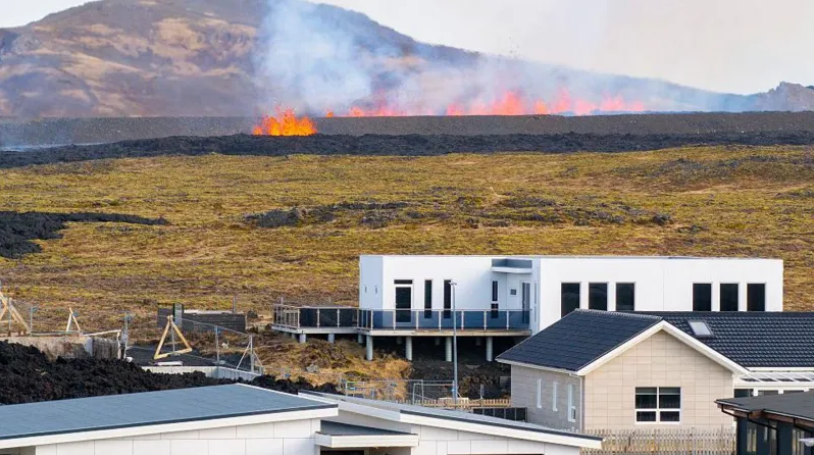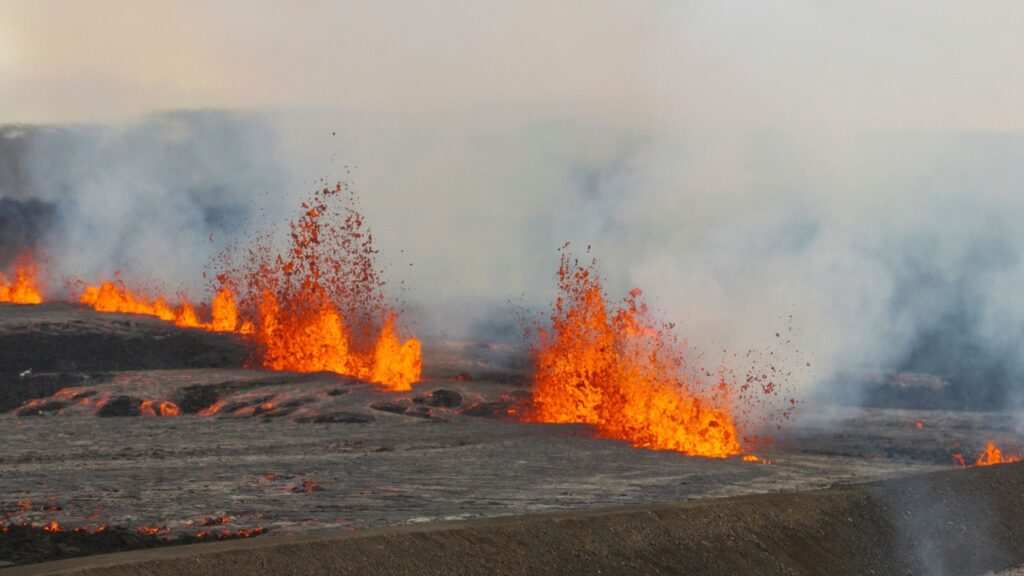Reykjavík, Iceland July 16, 2025 A powerful volcanic eruption in southwest Iceland has forced the urgent evacuation of both tourists and local residents from nearby areas. The eruption, which began late Sunday night, sent streams of lava, ash, and smoke into the air, lighting up the sky and creating dramatic scenes across the region.
Emergency Teams Help People to Move on Safely
Iceland’s Civil Protection Department relocated hundreds of people including foreign visitors and families from nearby towns to safe locations. Local police and rescue teams supported the evacuations and helped enforce road closures.

Grindavík, a nearby town previously evacuated earlier this year amid volcanic threats, returned to emergency watch as fresh seismic activity raised new concerns.
Authorities have confirmed that no deaths or serious injuries have been reported so far. However, they are continuing to monitor the lava flow and air quality, especially in areas downwind of the volcano where volcanic gases can pose health risks.
Iceland’s Volcanic Landscape Is Beautiful but Dangerous
Iceland is known for its natural beauty, including glaciers, geysers, and volcanoes. The country sits on a geological boundary between two tectonic plates, making it one of the most volcanically active places in the world.

Although eruptions occur frequently, officials treat each event with caution due to the danger it poses to people, homes, and infrastructure. The Reykjanes Peninsula has shown increased volcanic activity in recent years, with several small eruptions recorded since 2021.
Air Travel and Local Infrastructure Affected
Despite staying operational, Keflavík Iceland’s main international airport is under close flight surveillance as authorities monitor air traffic conditions in real time Volcanic ash in the air can damage airplane engines, so air traffic controllers are working with meteorologists to track the ash cloud’s movement.
Authorities have closed roads near the eruption site and set up emergency shelters for displaced residents. Crews are working around the clock to bring water, power, and internet services back online in towns hit by temporary outages.
Scientists Continue to Monitor the Volcano Closely
Volcanologists and geologists are working around the clock to study the eruption and understand how it might develop. They are using satellites, drones, and ground instruments to track lava flow, gas emissions, and ground movement.
Experts say it’s too early to predict exactly how long the eruption will last or how far the lava might spread. Authorities remain confident that enforcing rigorous safety measures can prevent loss of life, even in an environment fraught with danger.


 Zelensky humiliated in White House
Zelensky humiliated in White House